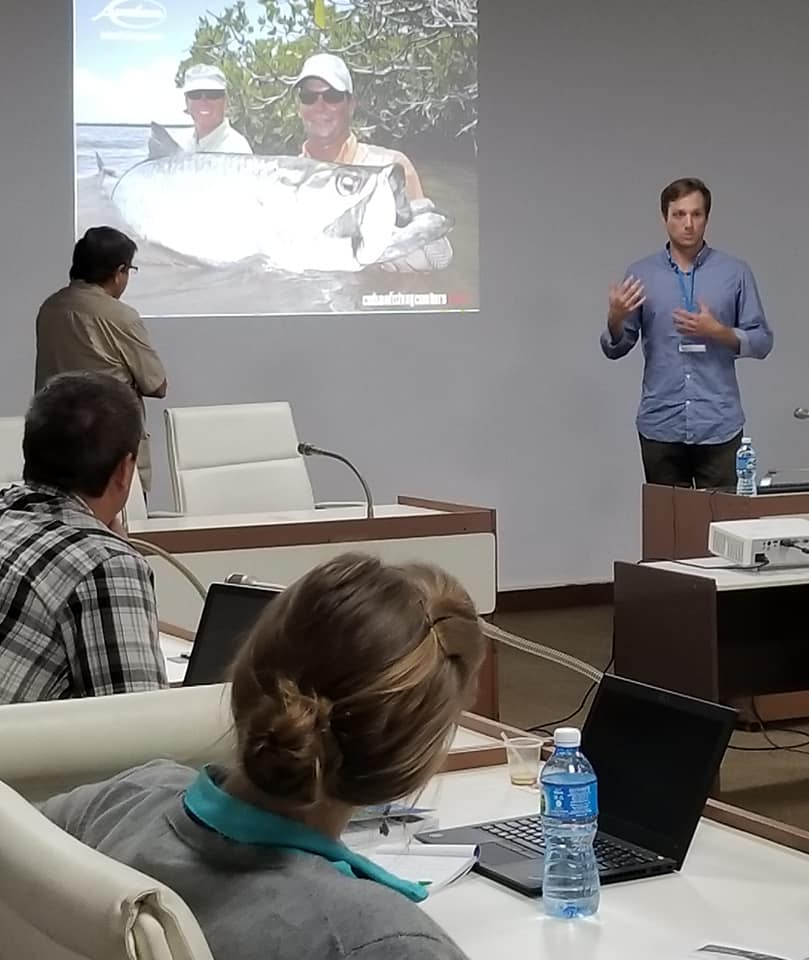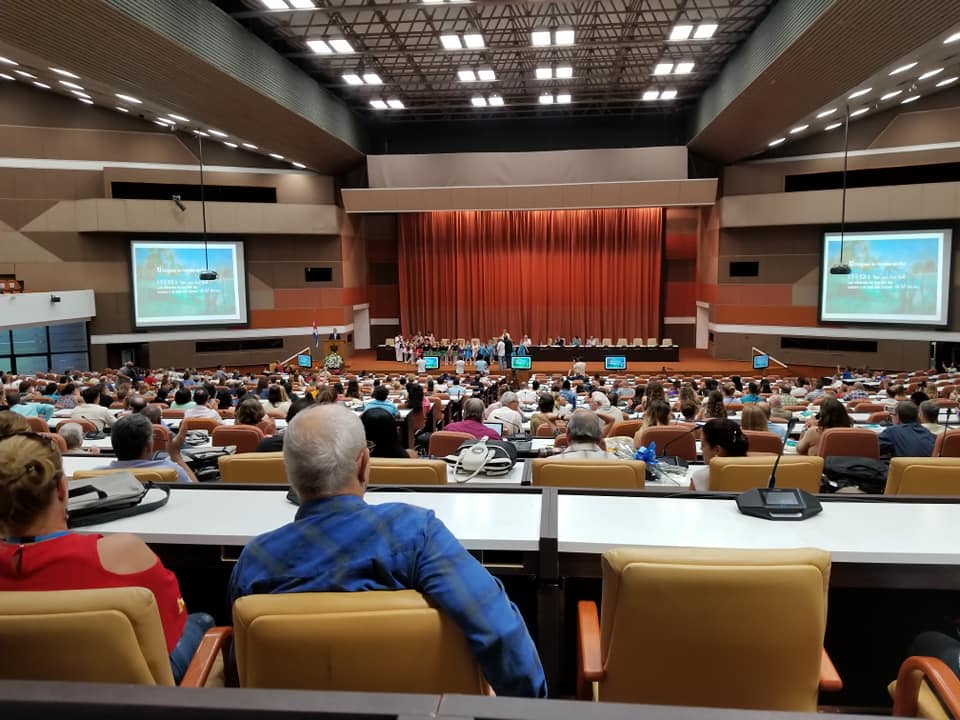A BTT team recently joined colleagues from throughout the Caribbean at the MarCuba conference in Havana, Cuba. We were invited to attend the conference by Commodore Jose Miguel Diaz Eschrich of the Hemingway International Yacht Club of Havana. The Commodore attended BTT’s 2017 Symposium and found BTT’s work exciting and very applicable to ongoing research and conservation work in Cuba. The conference was attended by Jim McDuffie, BTT’s President and CEO, Dr. Aaron Adams, Director of Science and Conservation, Dr. Ross Boucek, Florida Keys Initiative Manager, and Lucas Griffin, lead researcher on the Tarpon Acoustic Tagging Project and a Ph.D. Candidate at the University of Massachusetts.
In addition to learning from colleagues from Cuba and throughout the Caribbean, BTT also led a session titled Marine Species and Ocean Activities. The focus of the session was to share the most recent research on bonefish, tarpon, permit, and other fish species that rely on coastal habitats, and to demonstrate how this information is being used to improve conservation and management.
Dr. Adams summarized the big-picture view of conservation of the flats fishery: “Protecting Bonefish Permit and Tarpon is more than just protecting the habitats where we fish. We must also protect the spawning sites, juvenile habitats, and especially the connections between all of those habitats.”
Griffin followed Dr. Adams with an overview of BTT’s Tarpon Acoustic Tagging Project and showed how tarpon migrations across state and international boundaries mean that a regional approach to conservation is needed.
Dr. Boucek presented on our long-term research and science in The Bahamas. “In The Bahamas, we identified the habitats bonefish need throughout their lives, and worked with our Bahamian collaborators to apply the scientific findings to habitat protections, including six national parks,” said Dr.  Boucek. “Now those habitats are safe and the fisheries in those parks should be healthy for the long-term. Institutions can apply our Bahamas model anywhere in the Caribbean.” Dr. Boucek was also invited to serve on a panelist of experts who discussed biological connectivity across the Caribbean and how we can apply scientific results to regional conservation.
Boucek. “Now those habitats are safe and the fisheries in those parks should be healthy for the long-term. Institutions can apply our Bahamas model anywhere in the Caribbean.” Dr. Boucek was also invited to serve on a panelist of experts who discussed biological connectivity across the Caribbean and how we can apply scientific results to regional conservation.
Zenaida Navarro, a BTT collaborator from University of Havana, shared the latest on her work to understand tarpon movements in Cuba. “It’s exciting to work with Zenaida and her colleagues to learn about Cuba’s tarpon so she can apply this information to conservation,” said Dr. Adams. “Working in pristine areas of Cuba also gives us an idea of what Florida looked like before we altered freshwater flows and developed our coastlines. By learning how tarpon use habitats in Cuba, we can better evaluate how our alterations of Florida’s habitats have impacted tarpon, which can help guide our habitat restoration program.”
Collaborating with Cuban colleagues is also important to flats conservation in the Florida Keys, The Bahamas, and throughout the Caribbean. For example, recent research on how ocean currents transport bonefish larvae and on bonefish genetics show that we share a regional population. This means that some of the bonefish in the Florida Keys likely come from Mexico, Belize, and even Cuba. And Cuba and the Bahamas are closely linked as well. So even as we focus on important local issues like habitat conservation and water quality in Florida, we also have to take a regional approach because we need healthy fish populations in places like Cuba to support the fishery in the Keys. In addition, many of Cuba’s flats habitats are in nearly pristine condition, and many of these areas resemble the Florida Keys. As we move forward in our efforts to restore the Keys flats fishery, we can use Cuban ecosystems as reference to guide restoration.

Ocean current models show where bonefish larvae settle depending on where they spawn. The blue dots show where the larvae are at 53 days. The red lines are the transport tracks. The light blue dots are the spawning sites. Panel on the left shows where bonefish larvae settle if they are spawned on the south coast of Cuba. The panel on the right shows where bonefish larvae settle if they are spawned in Puerto Rico. There is high connectivity between bonefish that spawn in Cuba and Florida, whereas there is low connectivity between bonefish spawned in Puerto Rico and Florida.
BTT is excited about the ongoing collaborations with Cuban colleagues, and the new collaborations that will come from attending the conference. “Cuba is an important piece of the complex puzzle to protecting flats fisheries in Florida and across the Caribbean,” McDuffie said. “MarCuba 2018 gave us a great opportunity to share our conservation successes and to learn from others doing similar work. Flats conservation took a big step forward.”




